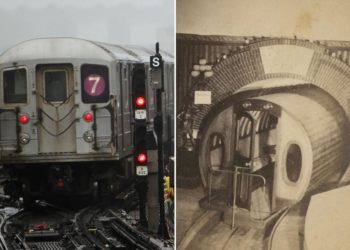In the In Times Past column, David W. Dunlap explores New York Times history through artifacts housed in the Museum at The Times.
Government officials have tried to silence or intimidate The New York Times for almost as long as there has been a New York Times. Their efforts usually fail.
But damage has been done. In 1955 and 1956, Senator James O. Eastland, a Mississippi Democrat and a staunch segregationist, attacked The Times in a series of hearings by the Internal Security Subcommittee, which he headed. Senator Eastland emulated the Red-baiting tactics of Senator Joseph R. McCarthy of Wisconsin, a Republican, as he questioned Times employees about their ties to Communism.
On the morning of July 13, 1955, Melvin L. Barnet (1914-1998), a Times copy editor subpoenaed by the subcommittee, refused to say whether he had once belonged to the Communist Party, citing the protection of the Fifth Amendment.
Arthur Hays Sulzberger (1891-1968), the publisher of The Times, discharged Mr. Barnet immediately. In fact, Senator Eastland announced the firing when the subcommittee reconvened that day after lunch. Mr. Sulzberger cryptically told Mr. Barnet in a letter that his conduct had “caused The Times to lose confidence in you.” For years thereafter, Mr. Barnet had trouble finding a job in journalism.
In “The Trust: The Private and Powerful Family Behind The New York Times,” Susan E. Tifft and Alex S. Jones wrote that Mr. Sulzberger publicly “welcomed an inquiry into Communist infiltration of the press.” But he privately “regarded the Eastland hearings as a calculated effort to discredit” The Times, given its extensive coverage of — and editorial support for — the growing civil rights movement.
Responding to the Eastland hearings, Charles Merz (1893-1977), the editorial page editor (forerunner of the Opinion editor), wrote “The Voice of a Free Press,” an editorial so powerful and eloquent that The Times published it twice, on Jan. 5 and Jan. 8, 1956. Newspapers around the country reprinted it or quoted from it. A handsome broadside version was typeset at the Overbrook Press in Stamford, Conn. The Museum at The Times has a copy of the broadside, pictured above.
“We cannot speak unequivocally for the long future,” Mr. Merz wrote, adding that “long after all that was known as McCarthyism is a dim, unwelcome memory, long after the last Congressional committee has learned that it cannot tamper successfully with a free press, The New York Times will still be speaking for the men who make it, and only for the men who make it, and speaking, without fear or favor, the truth as it sees it.”
David W. Dunlap, a retired Times reporter and columnist, is the curator of the Museum at The Times, which houses Times artifacts and historical documents.
The post A Voice of the Press, Preserved appeared first on New York Times.




